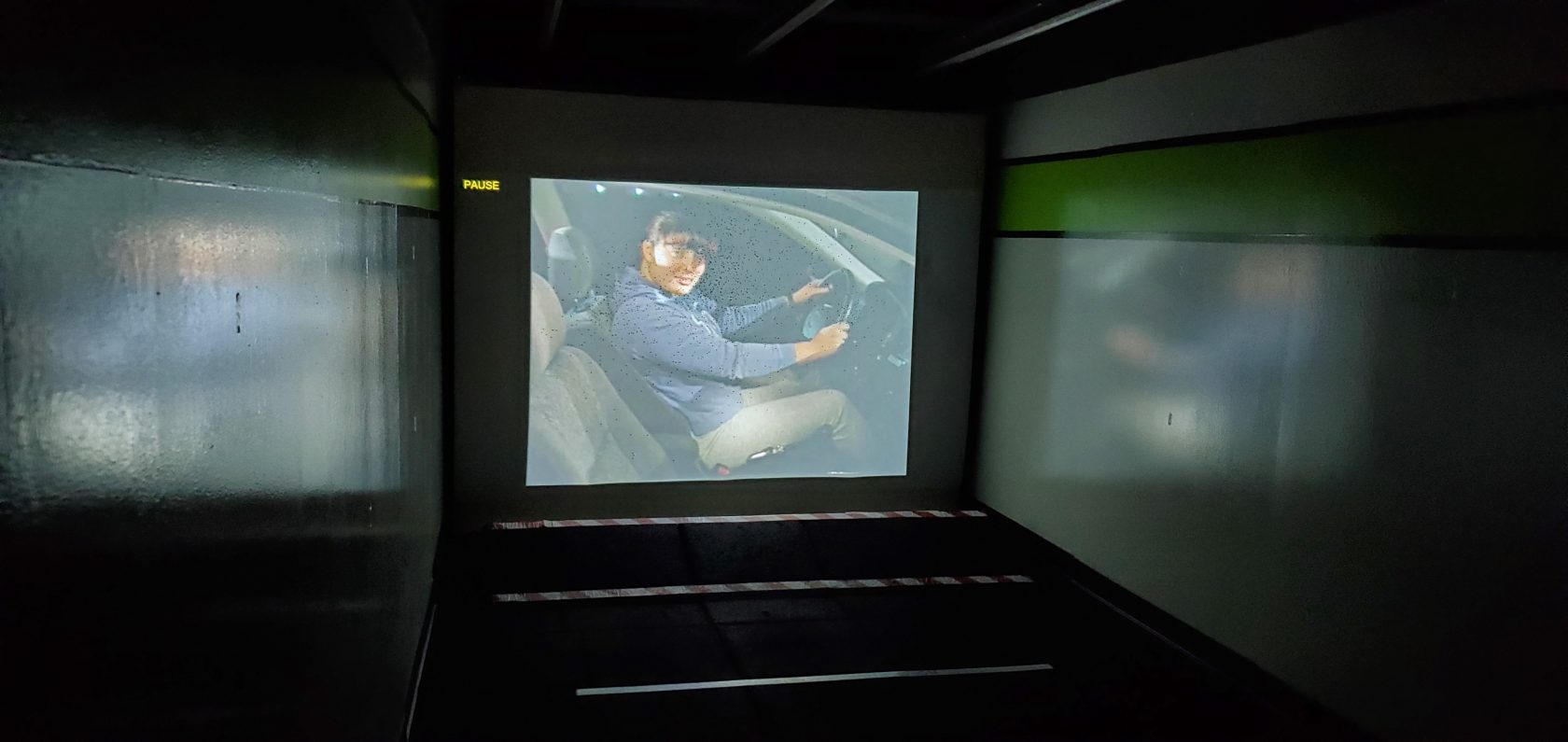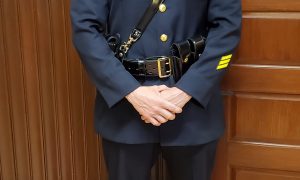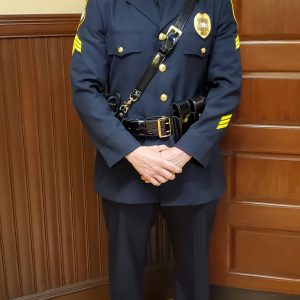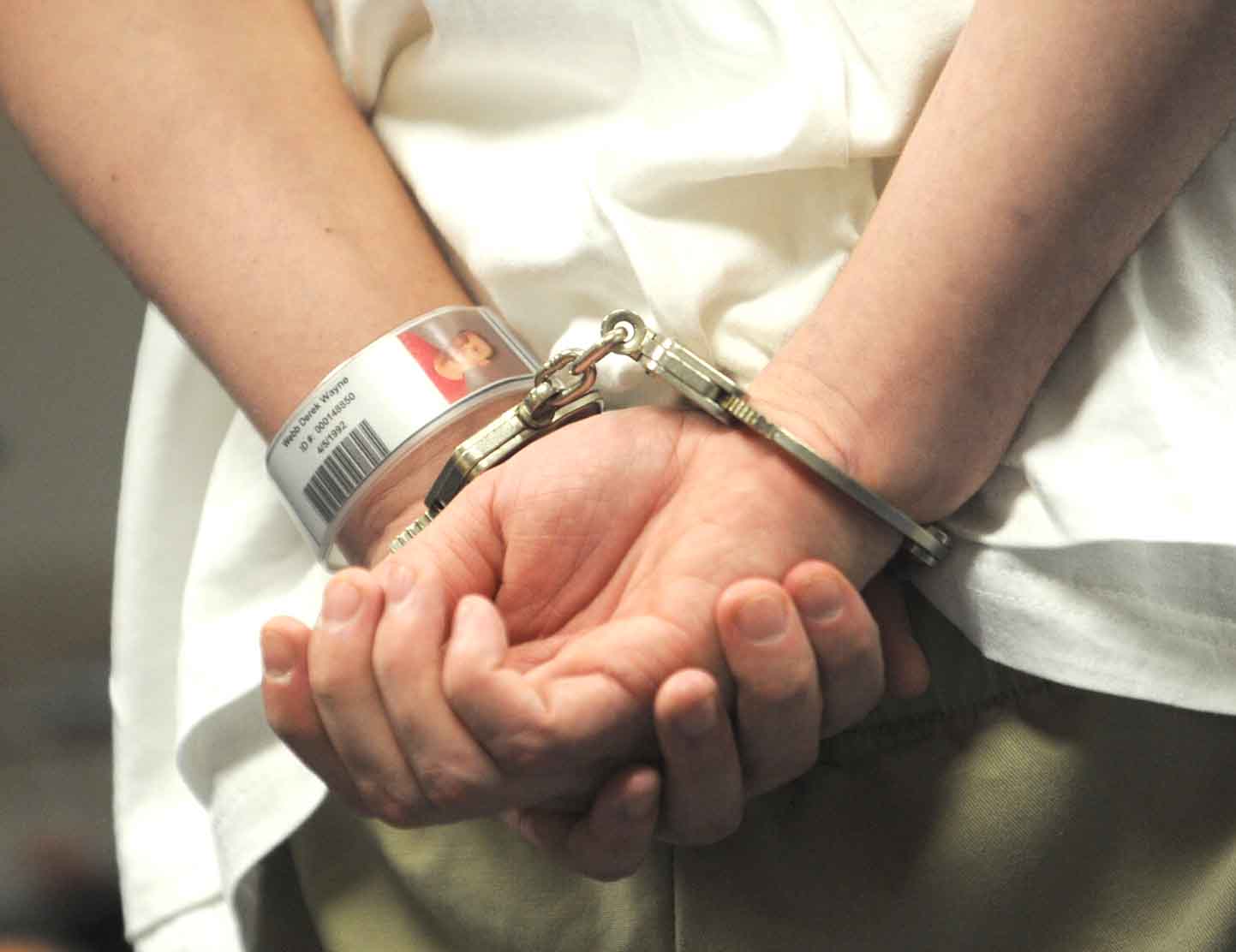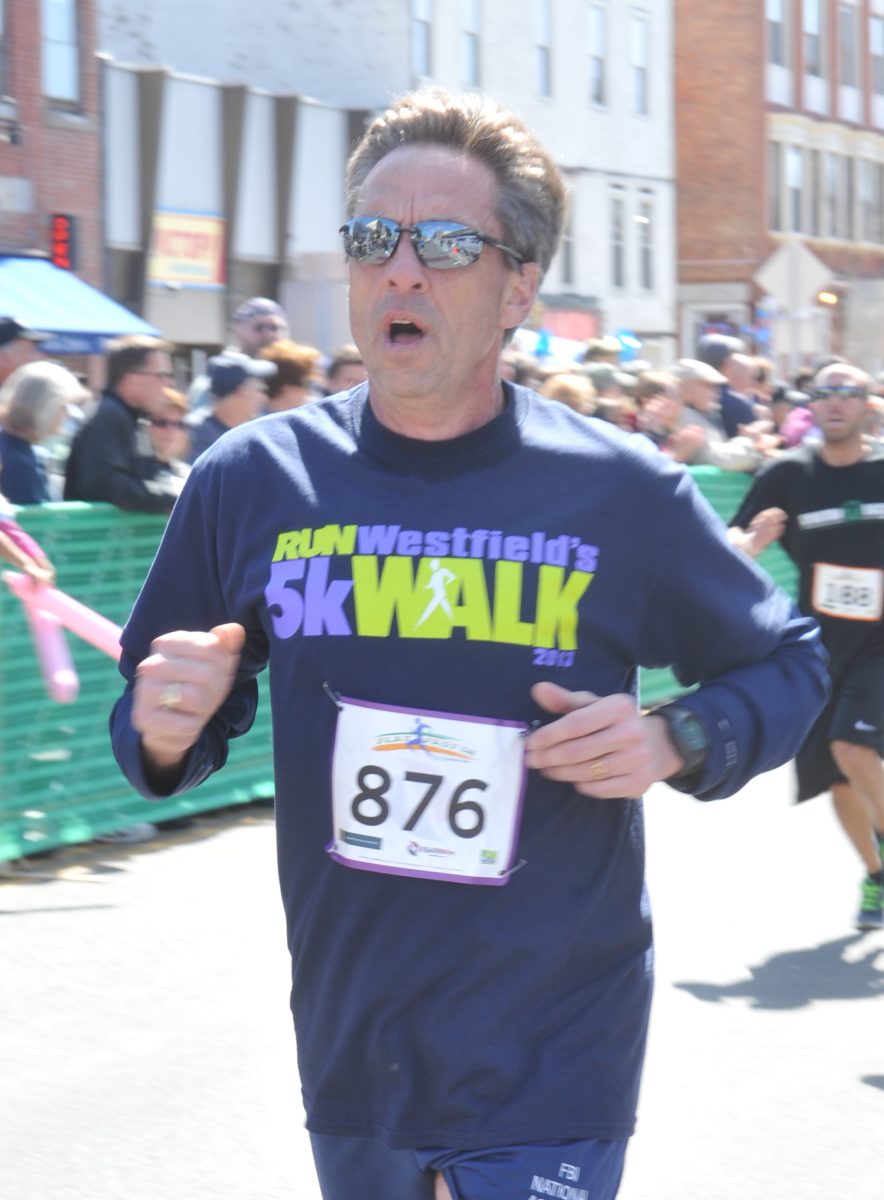WESTFIELD – The Westfield Police Department took a step in the direction of focusing on de-escalation training last week using a high-tech mobile shooting range.
To give the public an idea of what officers were doing inside the Gun Parlor’s mobile range, they allowed The Westfield News inside while some officers went through different police scenarios.
I sat down in the range next to the range instructor, who was on a computer that controlled the scenarios that were presented to the two officers standing about 10 feet in front of us. In front of them, at a distance of about half the length of a truck trailer, was a white screen with bullet holes from the training sessions conducted earlier in the week.
I, like everybody else in the room, was wearing shooting earmuffs and goggles. Between the hearing protection, the active air filtering in the range, and my already existing hearing problems, it was difficult at times to hear what the range instructor was saying to the officers, but the nature of each scenario was made clear on the screen before the scenario would begin to escalate.
While watching the officers go through the scenarios, I was struck by how often they were able to effectively de-escalate the situation, and how they did not fire their weapons unless they felt it was absolutely necessary. However, there were a few mistakes and failed scenarios that I saw that the officers were able to effectively learn from, without anybody actually being in harm’s way.
One such mistake that stuck with me was in a scenario in which the officers were supposed to respond to an active school shooting. The Westfield officers in the training were supposed to act as if they were meeting with other officers appearing on the screen before they swept a school hallway. When they approached an intersection in the hallway, shots could be heard from the scenario, and the Westfield officers could suddenly see the barrel of an M4 style rifle firing down the hallway from right to left.
At that moment, I thought to myself that if I were the one doing the training scenario, that would be a good time for me to shoot. I felt the rapid pulses in air pressure in the room as the officers fired in the direction of the rifle. The range instructor then allowed the scenario to continue playing, only to reveal that the rifle was being fired by another police officer with two officers standing behind him.
The officers had committed friendly fire in the scenario, at a moment where my untrained mind was thinking I would have done the same thing. The officers were then debriefed on the scenario, obviously already knowing where they went wrong. They were shown where each bullet ended up after they fired it, breaking down almost frame by frame what they should have done differently and how to handle such a scenario in the future. I didn’t come away seeing that moment as a failed test, but as the perfect moment for those officers to have made the mistakes they made. So many controversial police shootings, with some notable exceptions, happen because the officer needs to make a split-second decision involving life or death. I think training officers on how to better handle those 10-second moments of danger is a significant step in the path of police reform.
Another scenario I observed had the officers responding to what appeared to be a domestic violence situation. When a door on the screen was opened, the officers in the simulation restrained an adult male while a younger male came into view with a gun in his hand at his side. The Westfield officers raised their sidearms and began shouting orders at the man to put the gun down. Only when the range instructor moved the scenario so that the man raised the gun did the officers shoot him.
After the officers finished their sessions, I was offered a chance to use the range. At first, they were going to have me use a modified airsoft gun with an infrared laser that would tell the system exactly where I “fired” because I had never fired a gun before in my life. Unfortunately, that system could not be booted up, so I was allowed to use a real Glock-17 in the range, but only for target practice as it was my first time shooting.
Officer Mark Carboneau patiently helped me become acquainted with the gun, and how to safely handle it. Once the gun was loaded and I had it properly gripped, the range instructor began putting different types of stationary targets on the screen like watermelons, pumpkins, or standard range targets that fell when they were hit. As someone who had never fired a real gun, I was not prepared for the recoil. My accuracy ended up being decent, if I do say so myself. However, the whole time I was shooting, I kept thinking to myself that I would need actual proper training to be able to use this weapon in a real situation that would warrant it.
I exited the trailer with a bit more of an appreciation for how difficult some of these situations can be to handle, and how fast things can move. I have thought for a long time that police reform is a necessary road for us to be on. Westfield Police Department, along with officers from other local departments, showed that they are willing to go down that road with these special training sessions

